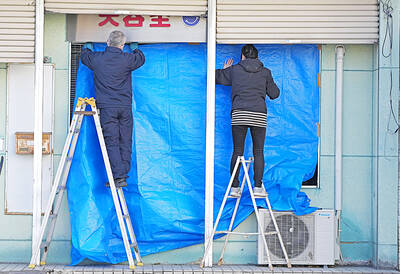China Airlines, one of the nation’s leading international carriers, yesterday said it would launch a route from Tainan to Osaka, Japan, in October to tap the growing enthusiasm in southern Taiwan for travel to Japan amid the depreciation of the yen.
The flights are to begin on Oct. 28, with two round-trip flights between Tainan and Osaka each week. The carrier said it would use narrow-body Boeing 737-800s on the route.
Since 2013, China Airlines has provided charter-flight services between Tainan and Hong Kong. The carrier said the launch of regular flights between Tainan and Osaka is expected to boost business opportunities for the tourism industry in southern Taiwan.
The Japanese market has been one of the most important sources of sales for China Airlines, as cities such as Osaka and Tokyo are popular destinations for Taiwanese tourists, market analysts said.
The yen’s depreciation has led many local tourists to take advantage of the favorable exchange rate between the yen and the New Taiwan dollar, they added.
The carrier currently provides 21 regular, round-trip flights between Taipei and Osaka, and 12 regular, round-trip flights between Kaohsiung and Osaka per week. Once the Tainan-Osaka services begin, the number of weekly regular flights offered by China Airlines to Osaka from Taiwan will rise to 35.
In addition to Osaka, China Airlines has started serving southern Taiwan with seven round-trip flights between Kaohsiung and Tokyo per week, seven round-trip weekly flights between Kaohsiung and Okinawa, and five between Kaohsiung and Hokkaido.
In light of the new Tainan-Osaka services, some local travel agencies have unveiled related tour packages, including a five-day tour of Osaka with a four-night hotel stay, with a starting price of NT$15,200 per person, before taxes, they said.

Taiwanese were praised for their composure after a video filmed by Taiwanese tourists capturing the moment a magnitude 7.5 earthquake struck Japan’s Aomori Prefecture went viral on social media. The video shows a hotel room shaking violently amid Monday’s quake, with objects falling to the ground. Two Taiwanese began filming with their mobile phones, while two others held the sides of a TV to prevent it from falling. When the shaking stopped, the pair calmly took down the TV and laid it flat on a tatami mat, the video shows. The video also captured the group talking about the safety of their companions bathing

US climber Alex Honnold is to attempt to scale Taipei 101 without a rope and harness in a live Netflix special on Jan. 24, the streaming platform announced on Wednesday. Accounting for the time difference, the two-hour broadcast of Honnold’s climb, called Skyscraper Live, is to air on Jan. 23 in the US, Netflix said in a statement. Honnold, 40, was the first person ever to free solo climb the 900m El Capitan rock formation in Yosemite National Park — a feat that was recorded and later made into the 2018 documentary film Free Solo. Netflix previewed Skyscraper Live in October, after videos

Starting on Jan. 1, YouBike riders must have insurance to use the service, and a six-month trial of NT$5 coupons under certain conditions would be implemented to balance bike shortages, a joint statement from transportation departments across Taipei, New Taipei City and Taoyuan announced yesterday. The rental bike system operator said that coupons would be offered to riders to rent bikes from full stations, for riders who take out an electric-assisted bike from a full station, and for riders who return a bike to an empty station. All riders with YouBike accounts are automatically eligible for the program, and each membership account

A classified Pentagon-produced, multiyear assessment — the Overmatch brief — highlighted unreported Chinese capabilities to destroy US military assets and identified US supply chain choke points, painting a disturbing picture of waning US military might, a New York Times editorial published on Monday said. US Secretary of Defense Pete Hegseth’s comments in November last year that “we lose every time” in Pentagon-conducted war games pitting the US against China further highlighted the uncertainty about the US’ capability to intervene in the event of a Chinese invasion of Taiwan. “It shows the Pentagon’s overreliance on expensive, vulnerable weapons as adversaries field cheap, technologically